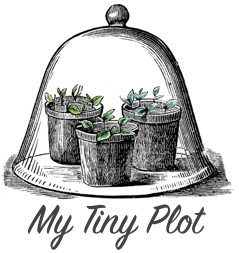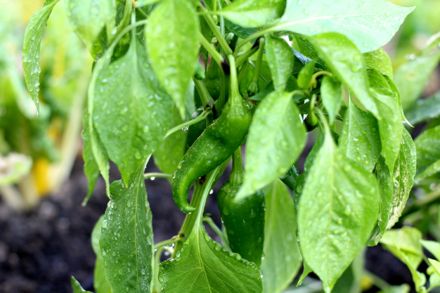Chilli Pepper Plants Not Thriving, Why?
I was volunteering at a local farmer’s market this weekend at the Master Gardeners stall. We are there to answer gardeners’ questions and promote organic gardening techniques.
A guy came over and asked a question about his failing Chilli Pepper plants. He said that he had sowed his Chilli seed back in February and grown some lovely, bushy and healthy plants. He had nurtured them through the Spring and in late Spring when we had a week of nice hot weather he had planted them out in the ground.
Since then their growth has slowed right down. Unlike the Chilli in the photo above, the larger leaves were falling off and the fruits that were ripening were tiny. The whole plant was not thriving and he wanted to know if we knew why?
Well, we had an idea. The week of nice hot weather was at the end of May and it was followed by a week of rain and rather colder weather (not icy – just chilly). This could have knocked the plants back and they’re having a hard time recovering.
He also mentioned that while he hadn’t tested his soil he suspected that it wasn’t that great nutrient-wise and that he hadn’t fertilised the plants at all. Chilli Peppers like rich soil with lots of organic matter in it. So if this chap’s soil is not all that it be he should have been fertilising with a good organic all round fertiliser like E B Stone’s Tomato and Vegetable Food.
The numbers on the front of the box say it all 4-5-3 (that’s Nitrogen, Phosphorus, Potassium). The highest number is Phosphorus which ensures that the overall root system of the plant is sound. Next comes Nitrogen to help build healthy leaves, and a close third comes Potassium that will help with fruiting. Given all three a vegetable will do its thing – produce a healthy crop for you. I wrote a more in depth post about the nutrients a plant needs if you want to know more info.
So in short, the poor Chilli plant was in shock from being planted out too soon. Taken from its lovely potting soil and transferred to a somewhat sub-standard soil and left to fend for itself. No wonder it’s not in the mood to produce big Chilli Peppers.
It’s probably too late this season but next season he should wait until at least the middle of June (or when the warm weather is predictable where you are) to plant out his Chilli plants. They are the last to go out in my garden along with Eggplant. They really are delicate.
And, to improve his soil before next Spring he could plant an over-wintering cover crop (maybe Red Clover) to increase the organic matter content of his soil. Sow in September, let it grow over the Winter and chop it in just after it has flowered in Spring, but (crucially) before it goes to seed. That will ensure a better soil structure next year. It’s probably not a bad idea to fertilise during the growing season occasionally too.
 My Tiny Plot
My Tiny Plot




RT @mytinyplot: Chilli Pepper Plants Not Thriving, Why? http://t.co/T2z69gnFqg
Eggplant? you’ve gone native! ;-)
It could also be because it is planted too close to a black walnut tree. Sadly for me, I cannot grow tomatoes or peppers, as well as several other plants, as the black walnut tree releases a toxin through its roots.
I’ve given up growing chillis outdoors here in the UK because even in a good summer there’s not quite enough warm weather for them to thrive. I suspect that might be the case in Portland too.
This year I’m growing mine on the windowsill and have plenty of peppers forming. This is a first for me! I’m also going to see if I can keep it as a perennial plant this way.
Reply to VP, I have grown peppers indoors for years in Ireland. Having fresh peppers at Christmas regularly. they use a surprising amount of water & perform a lot better with some tom feed, even once a month in the winter.